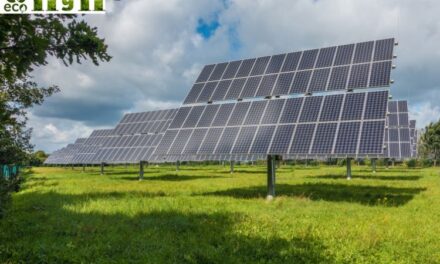Renewable District Heating– Renewable district heating is an innovative and sustainable way to provide heat to homes, businesses, and public buildings. As the UK continues to strive towards its net-zero carbon emissions target by 2050, district heating systems are gaining attention as a viable solution to reduce reliance on fossil fuels and lower greenhouse gas emissions. This blog will explain how district heating works, its advantages, and why it is an important part of the UK’s renewable energy future.
How Does District Heating Work?
District heating, also known as heat networks, involves generating heat from a central source and distributing it to multiple buildings via a network of underground pipes. The heat can be used for space heating, hot water, and even industrial processes. Here’s a step-by-step breakdown of how it works:
1. Heat Generation
Heat is produced at a central plant using renewable energy sources such as biomass, geothermal energy, solar thermal, or waste heat from industrial processes. In some cases, combined heat and power (CHP) plants are used to generate both electricity and heat simultaneously.
2. Heat Distribution
The heat is transported through a network of insulated pipes, which are buried underground to minimise heat loss. These pipes carry hot water or steam to the connected buildings.
3. Heat Delivery
Each building connected to the network has a heat exchanger or substation that transfers the heat from the network to the building’s internal heating and hot water systems.
4. Return Loop
After the heat is used, the cooled water is returned to the central plant through a separate set of pipes, where it is reheated and recirculated.
Advantages of Renewable District Heating
1. Energy Efficiency
District heating systems are highly efficient because they centralise heat production and reduce energy losses associated with individual heating systems. Using renewable energy sources further enhances their efficiency and sustainability.
2. Lower Carbon Emissions
By replacing fossil fuel-based heating systems with renewable energy sources, district heating significantly reduces greenhouse gas emissions. This helps the UK achieve its climate goals and improves air quality in urban areas.
3. Cost Savings
District heating can lower energy bills for consumers by providing heat at a lower cost than traditional heating systems. The centralised nature of the system also reduces maintenance and operational costs for individual buildings.
4. Reliability and Resilience
District heating systems are reliable and resilient, as they are less vulnerable to fuel supply disruptions and price fluctuations. They also provide a consistent and controllable heat supply, ensuring comfort for users.
5. Space Saving
By eliminating the need for individual boilers or heating systems in each building, district heating frees up valuable space that can be used for other purposes.
6. Scalability
District heating networks can be expanded over time to connect more buildings and communities. This makes them a flexible solution for urban development and regeneration projects.
Renewable Energy Sources for District Heating
1. Biomass
Biomass boilers burn organic materials like wood pellets or chips to generate heat. Biomass is a renewable and carbon-neutral energy source when sourced sustainably.
2. Geothermal Energy
Geothermal systems extract heat from the earth’s core and use it to warm water for district heating networks. This is a reliable and low-carbon energy source.
3. Solar Thermal
Solar thermal systems use solar panels to capture heat from the sun and transfer it to the district heating network. This is particularly effective in sunny regions.
4. Waste Heat
Waste heat from industrial processes, power plants, or incineration facilities can be captured and used to power district heating systems. This reduces energy waste and lowers costs.
5. Combined Heat and Power (CHP)
CHP plants generate both electricity and heat simultaneously, maximising energy efficiency and reducing carbon emissions.
Challenges of District Heating
While district heating offers numerous benefits, there are some challenges to consider:
1. High Initial Costs
The installation of district heating networks requires significant upfront investment in infrastructure, including pipes, heat plants, and substations.
2. Planning and Coordination
Developing a district heating network involves careful planning and coordination between multiple stakeholders, including local authorities, energy providers, and property owners.
3. Heat Loss
Although insulated pipes minimise heat loss, some energy is inevitably lost during distribution. Proper design and maintenance are essential to reduce losses.
4. Consumer Awareness
Many consumers are unfamiliar with district heating and its benefits. Raising awareness and building trust are crucial for the widespread adoption of this technology.
The Future of District Heating in the UK
The UK government is actively promoting district heating as part of its strategy to decarbonise the heating sector. Initiatives like the Heat Networks Investment Project (HNIP) provide funding and support for the development of heat networks across the country.
As more cities and communities embrace renewable district heating, it has the potential to transform the way we heat our homes and businesses, making our energy systems more sustainable, efficient, and resilient.
Conclusion
Renewable district heating is a game-changing solution for reducing carbon emissions, lowering energy costs, and improving energy efficiency in the UK. By centralising heat production and using renewable energy sources, district heating networks offer a sustainable and reliable alternative to traditional heating systems.
While there are challenges to overcome, the benefits of district heating far outweigh the drawbacks. As the UK continues to invest in this technology, it will play a crucial role in achieving net-zero carbon emissions and creating a greener, more sustainable future.
By embracing renewable district heating, we can transform our communities and take a significant step towards a cleaner, more energy-efficient world. Explore the potential of district heating today and be part of the energy revolution!





